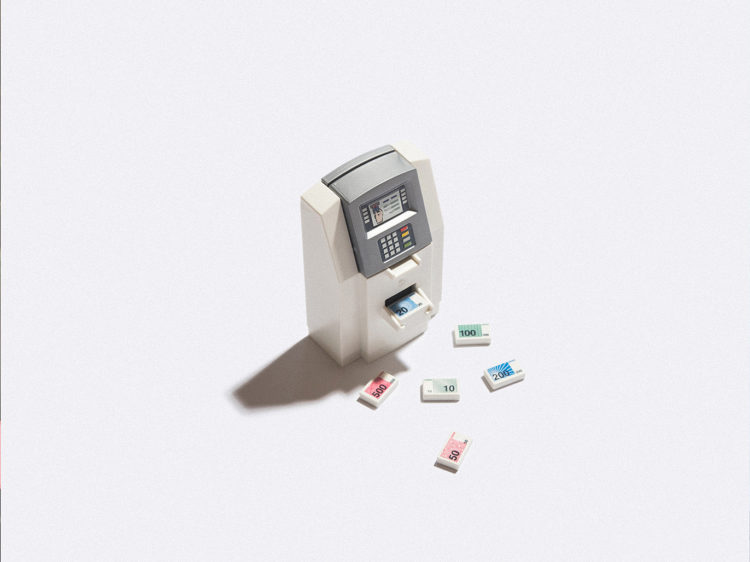Occasionally we’ll link out to relevant products that could be useful to our readers. Learn more about us here.
There are a few different ways to save for retirement, but registered pension plans (RPPs) offer an increasingly rare benefit: the potential for free money from your employer. An RPP is set up and managed by employers to provide full-time workers with income in retirement (pensions). Both the employer and employee can contribute to the plan, and many companies will match a percentage of employees’ contributions.
Employer-sponsored pensions aren’t as common as they used to be, with only about 37% of working Canadians having pension coverage, according to Statistics Canada. But if your workplace offers it, and you’re eligible to enroll, pension plans can help you boost your savings through forced investing–a portion of your pay is automatically saved every pay period–employer contribution matching and tax-sheltered benefits.
Understanding the RPP
An RPP is a type of registered account, which means it has special tax benefits from the Canada Revenue Agency. Contributions you make to an RPP can be claimed as a deduction on your annual income tax return, and all contributions, interest and investment gains grow tax-free as long as the funds stay in the plan. Your money is generally locked in until you reach the minimum retirement age specified in your plan.
RPPs can be “non-contributory,” where only the employer contributes money, or “contributory,” where both the employer and employee contribute. Some employers will match employees’ contributions up to a maximum percentage of their annual income. For example: If your salary is $50,000 and you invest 4% of your annual income, then you will end up putting $2,000 a year into your plan. If your employer matches contributions up to a maximum of 4% of your annual income, then your employer will put in $2,000 a year, too.
One possible benefit to RPPs is that they’re totally hands-off. Your contributions are automatically deducted from your paycheque, while your employer chooses the financial institution that invests your money. Employer-sponsored plans typically have lower management fees—usually less than 1%—than compared to what’s available for individual investors.
Trade stocks commission-free and get a $10 cash bonus
Open a Wealthsimple Trade account to buy and sell thousands of stocks and ETFs commission-free. You’ll get a $10 cash bonus when you join.
Terms and conditions apply.
Defined contribution vs. defined benefit plan
There are two main types of pension plans: defined contribution (DC) and defined benefit (DB). Some employers offer a choice between the two, or hybrid plans that combine elements of both, though DB plans are becoming less and less popular every year.
Defined benefit pension plan
Also called a money purchase plan, a DB plan guarantees that you’ll receive a specific amount of income in retirement. That amount is determined by a formula based on your years of pensionable service with the company, your age at retirement, and your earnings. Your employer might use average annual earnings over your highest paid years of employment to calculate your pension, or average earnings over your last years of employment. Every plan is different, but your pension may be reduced if you retire before a certain age or if you haven’t worked a minimum number of years.
Defined contribution pension plan
The employer and/or employee make contributions to the plan based on a formula, usually a certain percentage of the employee’s annual salary. The amount of money you have at retirement depends on your length of employment and enrollment in the plan, how much you and your employer contribute and how your investments perform. When you retire, you’re responsible for managing and withdrawing income to meet your needs. You can transfer your savings to another tax-deferred registered account that pays out regular retirement income, such as an annuity, a life income fund, or a locked-in retirement income fund.
Pension plan pros and cons
RPPs have a few pros and cons when it comes to saving and investing for retirement.
RPP benefits
Free money from your employer: Contribution matching is one of the biggest advantages pension plans offer. If you’re among the handful of Canadians with that option, it’s a good idea to take advantage of free money you wouldn’t get otherwise.
Tax savings: You’ll receive a deduction on your income taxes for the amount you contribute to an RPP, and contributions grow tax-free as long as they remain in the account. When you withdraw money, it is taxed as earned income. The idea is to reduce the amount of income tax you pay both during your working years and in retirement, when you’re earning less income (or no income) and your marginal tax rate is lower.
RPP drawbacks
Dependent on employment: Access to a pension is fully dependent on whether your employer offers one. If your workplace doesn’t have a pension plan, there are other tax-sheltered accounts to help you save for retirement, such as a registered retirement savings plan (RRSP) or tax-free savings account (TFSA).
No control over investments: Once your contribution comes out of your paycheque, how it’s invested is out of your hands. Employers choose the type of plan and financial institution, which handles investing, managing and administering your plan.
RPP vs. RRSP
A registered retirement savings plan (RRSP) is another type of account that offers tax benefits to help encourage Canadians to save. The main difference between RPPs and RRSPs is that pension plans are run by employers, while RRSPs are set up by individuals. Because RRSPs are funded by your contributions alone, they don’t benefit from employer contribution matching.
With an RRSP, you can contribute up to 18% of your annual earned income, up to a maximum of $27,230 for the 2020 tax year.
It’s important to note that pension plans and RRSPs share contribution room. This is to prevent double-dipping on tax benefits by people who have both a pension and an RRSP. When your employer contributes to your pension plan, it reduces RRSP contribution room the following year. This is called a “pension adjustment,” and can be found on the T4 slip given to you by your employer each year.
Like pension plan contributions, RRSP contributions can be claimed as a deduction on your annual income tax return. You only pay tax when you make withdrawals—hopefully in retirement, when your tax rate is lower. RRSPs can hold a number of investments, and you can manage your account through a financial advisor, robo-advisor or self-directed portfolio.
Group RRSP
While RRSPs are generally used by individuals, there is a Group RRSP that is available to business owners to help their staff save. The group RRSPs are similar to pension plans, and may be offered by employers in place of an RPP. Contributions are deducted automatically from your paycheque on a pre-tax basis, so you see the tax savings immediately. Your employer may also match or top up your contributions.
Pooled registered pension plan (PRPP)
There’s also an RPP that’s tailored to the self-employed or those who don’t receive a workplace pension. If you’re a full-time employee of a federally regulated business or industry and your employer offers a PRPP, you will be automatically enrolled, though you can opt out.
If you don’t have full-time employment or your company doesn’t offer a pension plan, an RRSP can help fill that gap. You don’t have to choose between one or the other—you can have an RRSP and a company pension plan, as well as other types of registered accounts (TFSAs, RESPs, etc.), but don’t forget to factor in annual contribution room limits.
RPP contributions
When you enroll in your company’s pension plan, your contributions will be automatically deducted from your paycheque. Employers and/or employees contribute a set amount, usually a percentage of the employee’s income. Both defined benefit and defined contribution plans have annual limits, which apply to contributions made by both the employee and the employer.
RPP income tax
When you file your income taxes, you can deduct RPP contributions for your current service–the period where you’re employed and enrolled in your company’s pension plan–or for past service from 1990 onwards. However, any amount you don’t deduct cannot be carried forward to future years. You can find your RPP contributions on Box 20 of your T4 slip, or on the receipt issued by your plan administrator.
There are some cases where you can deduct part of past service contributions for 1989 or earlier, but you should consult with a tax professional or the CRA. if you have questions about RPPs deduction limits and contributions for current and past service.
Keep in mind that you can’t claim your employer’s contributions to a registered pension plan as part of your personal tax deduction. Your employer’s contributions are considered a “taxable benefit,” and are added to your employment income.
RPP withdrawals
For defined benefit plans, it’s pretty simple: if you meet your minimum years of service and retire after the minimum age, you’ll receive a fixed amount of money regularly for the rest of your life. When it’s time to file your annual income taxes, pension withdrawals are taxed as income at your marginal tax rate.
With defined contribution plans, your options depend on two things: your age, and your pension balance at retirement. First, the minimum age at which you can take a pension is 55 in most provinces. If you retire before then, you can’t cash out your pension—you’ll have to transfer your pension savings to a locked-in retirement account (LIRA), which is another kind of registered account, but you can’t add to it or remove any money from it until you turn 55 (save for some exceptions). If you retire after age 55 you can transfer your savings to an income-producing life annuity or life income fund (LIF), which will then distribute regular payments.
Second, you have the option to cash out your pension in full or transfer the balance to an RRSP if your pension balance is less than 20% of the yearly maximum pensionable earnings (YMPE). YMPE is the maximum amount of earnings covered by the Canada Pension Plan. For 2020, the YMPE is $58,700.
What happens to your pension plan if you leave your employer?
Each province and territory has different laws about when an employer’s contributions are “vested.” Vested means you have a claim over your employers’ contributions, as well as your own, if you leave the plan. In most provinces, plan contributions are vested immediately.
In other provinces, employers may require you to work for them or be enrolled in the pension plan for a period of time before contributions are vested (for example, a minimum of two years). You’ll get your own contributions back if you leave before that time period is up, but you’ll lose your employer’s contributions.
When you leave an employer, you have a few options for your vested funds.
- Leave your assets in the plan.
- Transfer the value to another locked-in retirement plan (one that allows transfers).
- Transfer the value to an RRSP, if you have the contribution room.
- If your money isn’t locked in until retirement, you can take the cash. However, keep in mind that your withdrawals will be taxed as earned income and could result in a higher tax bill if you aren’t yet retired.
If you’re fortunate enough to have an employer who offers a pension plan, it’s a great incentive to save for retirement when you know they’re kicking in extra cash. When enrolling in your company’s RPP, make sure you understand the terms around the plan’s contribution rules, tax deductions and minimum retirement age.











